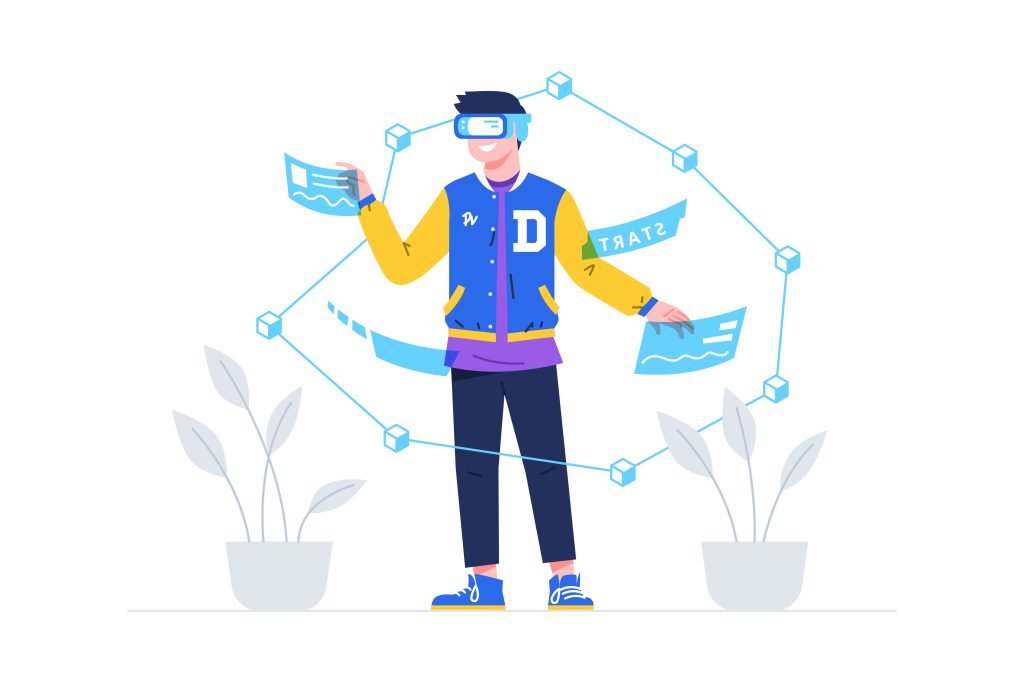Virtual Reality (VR) and Augmented Reality (AR) are transforming the way we teach and learn in the 21st century classroom. By leveraging these immersive technologies, educators can create engaging, interactive, and inclusive learning experiences that deepen student understanding and prepare them for the digital future.

Enhancing Student Engagement and Motivation
VR and AR have the power to capture students’ attention like never before. By transporting them into fully immersive digital environments or overlaying interactive digital content onto the real world, these technologies make learning more interactive, enjoyable, and memorable. Studies show that immersive experiences can significantly improve information retention and understanding.
Promoting Inclusivity and Accessibility
Integrating VR and AR into the classroom promotes inclusivity by providing a dynamic and stimulating learning environment for students with diverse needs and learning styles. These technologies can be particularly beneficial for students with disabilities, offering new ways to access and engage with educational content.

Fostering Deeper Understanding of Complex Concepts
VR and AR have the unique ability to make abstract concepts tangible and easier to grasp. By allowing students to visualize and interact with digital representations of scientific processes, historical events, or mathematical models, these technologies can deepen understanding and make learning more intuitive.
Preparing Students for the Digital Future
As technology continues to advance, it is crucial that we equip students with the digital skills and competencies they will need to thrive in the 21st century workforce. By incorporating VR and AR into classroom instruction, we can help students develop critical thinking, problem-solving, and collaboration skills while familiarizing them with cutting-edge technologies.

Integrating VR and AR Effectively
To successfully integrate VR and AR into the classroom, educators must engage in thoughtful planning and strategic implementation. This includes:
- Aligning the use of VR and AR with specific curriculum goals and learning objectives
- Selecting age-appropriate and user-friendly VR and AR tools and applications
- Preparing the classroom environment to support immersive experiences
- Providing clear instructions and context to students before the VR/AR activity
- Facilitating the experience and encouraging student interaction
- Debriefing and reflecting on the learning outcomes after the activity
- Assessing student learning and the effectiveness of the VR/AR integration
Professional Development for Educators
As with any new technology, integrating VR and AR into the classroom requires educators to engage in ongoing professional development. This can include attending workshops, webinars, or collaborating with tech-savvy colleagues to share experiences and strategies. By continuously learning and improving their VR/AR integration skills, teachers can ensure that they are providing their students with the most effective and engaging learning experiences possible.
Conclusion
In conclusion, Virtual Reality and Augmented Reality have the potential to revolutionize classroom instruction by enhancing student engagement, promoting inclusivity, fostering deeper understanding, and preparing students for the digital future. By strategically integrating these technologies into their teaching practice, educators can create immersive and transformative learning experiences that inspire and empower their students to reach new heights of achievement.
- Enhancing Student Engagement and Motivation
- VR and AR capture student attention through immersive digital environments.
- These technologies make learning interactive, enjoyable, and memorable, improving information retention.
- Promoting Inclusivity and Accessibility
- VR and AR provide dynamic learning environments for diverse needs and learning styles.
- Particularly beneficial for students with disabilities, offering new ways to engage with content.
- Fostering Deeper Understanding of Complex Concepts
- VR and AR make abstract concepts tangible and easier to grasp.
- Students can visualize and interact with digital representations, deepening understanding.
- Preparing Students for the Digital Future
- Incorporating VR and AR helps students develop critical thinking, problem-solving, and collaboration skills.
- Familiarizes students with cutting-edge technologies needed for the 21st-century workforce.
- Integrating VR and AR Effectively
- Align VR and AR use with curriculum goals and learning objectives.
- Select age-appropriate and user-friendly tools.
- Prepare the classroom environment to support immersive experiences.
- Provide clear instructions and context before the activity.
- Facilitate the experience and encourage interaction.
- Debrief and reflect on learning outcomes post-activity.
- Assess student learning and VR/AR integration effectiveness.
- Professional Development for Educators
- Continuous learning through workshops, webinars, and collaboration with tech-savvy colleagues.
- Ongoing improvement in VR/AR integration skills to enhance learning experiences.
How can you leverage VR and AR in your own classroom to enhance student engagement and understanding?

